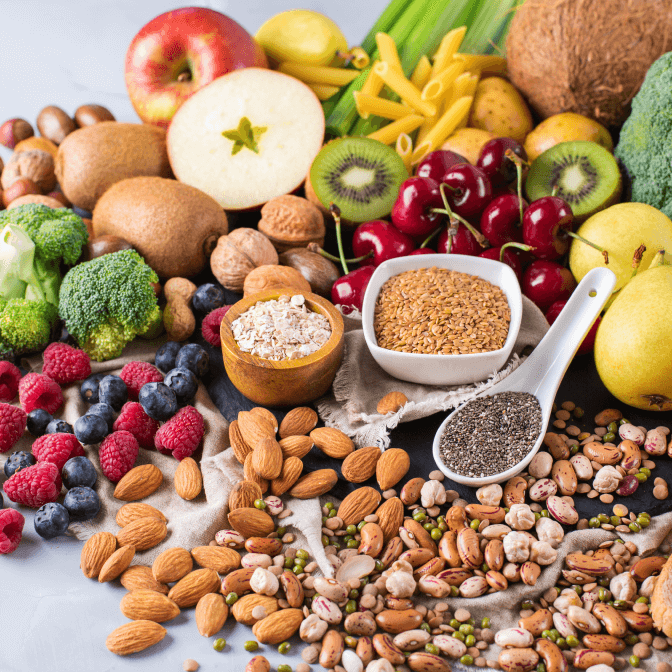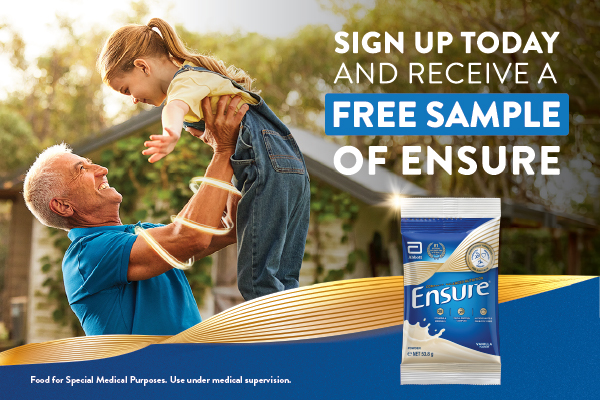Food for Special Medical Purposes. Use only under medical supervision.
CaHMB: calcium ß-hydroxy-ß-methylbutyrate. DXA: Dual-energy X-ray absorptiometry. ONS: oral nutritional supplement.
*Claim is valid on date of Ensure Plus Strength Brand Research (4 November 2021).
References: 1. Cruz-Jentoft AJ, et al. Age Ageing. 2019;48(1):16–31. 2. Malmstrom TK, et al. J Cachexia Sarcopenia Muscle. 2016; 7: 28–36. 3. Dodds RM, et al. J Cachexia Sarcopenia Muscle. 2021;12:308–318. 4. Argiles JM, et al. J Am Med Dir Assoc. 2016;17(9):789–96. 5. Bauer J, et al. JAMDA. 2013;14:542–59. 6. Symons T, et al. J Am Diet Assoc. 2009;109(9):1582–86. 7. Nutrient Reference Values for Australia and New Zealand. Canberra National Health and Medical Research Council; 2006 – Vitamin D. Available online: https://www.nrv.gov.au/nutrients/vitamin-d. Accessed: May 2023. 8. Nutrient Reference Values for Australia and New Zealand. Canberra National Health and Medical Research Council; 2006 – Calcium. Available online: https://www.nrv.gov.au/nutrients/calcium. Accessed: May 2023. 9. Deutz NE, et al. JAMDA. 2019;20:22–27. 10. Ensure® Plus Strength Product Label. 11. Nutrient Reference Values for Australia and New Zealand. Canberra National Health and Medical Research Council; 2006 – Protein. https://www.eatforhealth.gov.au/nutrient-reference-values/nutrients/protein. Accessed: May 2023. 12. Deutz NE, et al. Clin Nutr. 2016;35(1):18–26. 13. Deutz NE, et al. Clin Nutr. 2021;40(3):1388–1395. 14. Ritch CR et al. J Urol. 2019;201(3):470–477. 15. Malafarina V, et al. Maturitas. 2017;101:42–50. 16. Olveira G, et al. Clin Nutr. 2016;35(5):1015–1022. 17. Ekinci O, et al. Nutr Clin Pract. 2016;31(6):829–835. 18. Cramer JT, et al. J Am Med Dir Assoc. 2016;17(11):1044–1055. 19. Berton L, et al. PLoS One. 2015;10(11):e0141757. 20. De Luis DA, et al. Nutr Hosp. 2015;32(1):202–207. 21. De Luis DA, et al. Eur Geriatr Med. 2018;9(6):809–817. 22. Matheson EM, et al. Clin Nutr. 2021;40(3):844-849. 23. Peng LN, et al. J Nutr Health Aging. 2021; 25(6):767–773. 24. Loman BR, et al. JPEN J Parenter Enteral Nutr. 2019;43(6):794–802. 25. Olveira C, et al. Nutr Hosp. 2020;37(1):6–13. 26. Zana S, et al. J Am Med Dir Assoc. 2021;22(7):1358–1360. 27. Standley RA, et al. J Gerontol A Biol Sci Med Sci. 2020;75(9):1744–1753. 28. Pereira SL, et al. Nutrients. 2022;14(6):1196. 29. Espina S, et al. Nutrients. 2021;13(11):3764. 30. Cornejo-Pareja I, et al. Nutrients. 2021;13(12):4355. 31. López-Rodríguez-Arias F, et al. Support Care Cancer. 2021;29(12):7785–7791.




